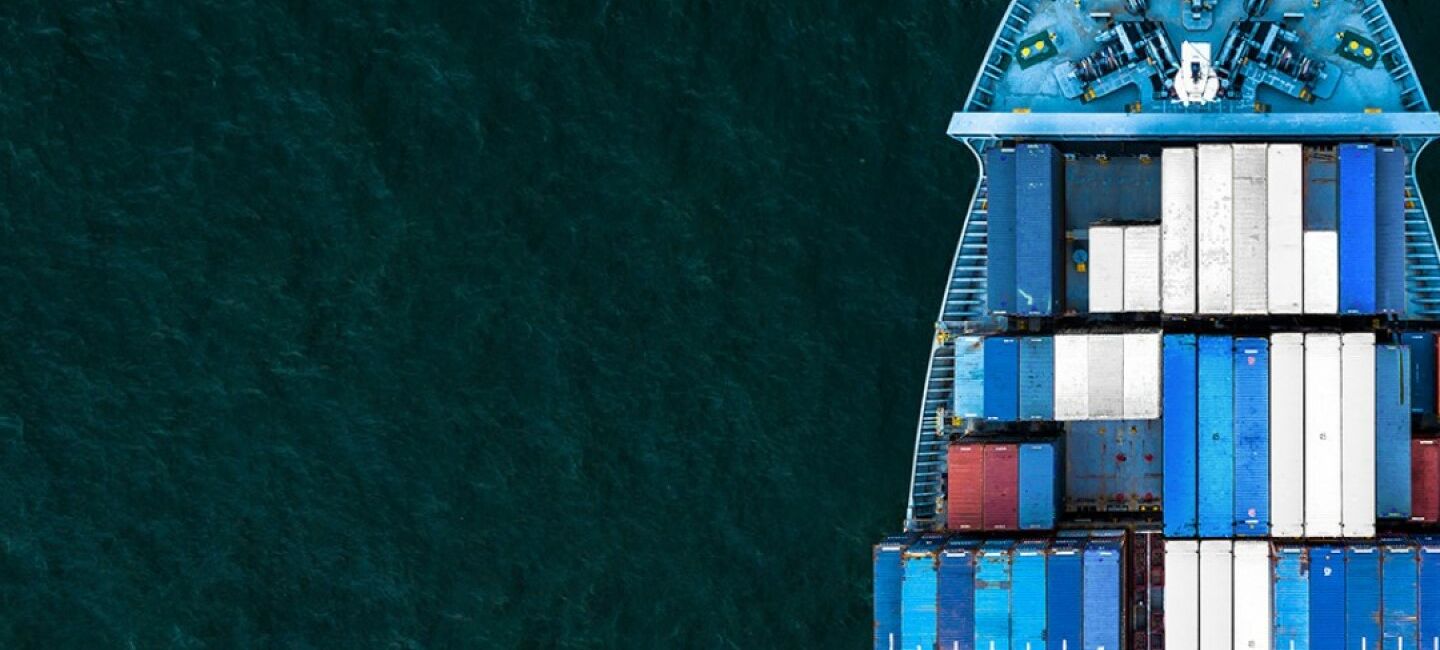A blog by Tom Mellor, Head of OEM Technical Support and Digital Standards at the UK Hydrographic Office
Continuing insights from our previous London International Shipping Week blog, we dive deeper into exploring how marine data is a vital asset to help shipping to embrace the possibilities of digitalisation. We also highlight the work we are doing at the UKHO to support ship owners in reducing their emissions, curbing shipping's carbon impact, and improving ocean stewardship.
Making autonomous shipping a reality
In the second session of our LISW seminar, I spoke about the potential of autonomous vessels and navigation, and the projects we are already supporting here at UKHO to help make autonomous shipping a reality.
It is expected that autonomous shipping as a sector has the potential to be worth £111 billion by 2030. Autonomous vessels can transform shipping by increasing efficiency, improving safety and supporting sustainability. Innovation in digitalisation, ship-to-shore connectivity, and wider advances in autonomous navigation are becoming more of a reality.
Already we see huge progress for this segment, with projects such as the Mayflower autonomous vessel, demonstrating how embracing digitalisation and applying marine geospatial data can support a crewless voyage.
UKHO has been supporting this project by providing high resolution gridded bathymetry, tidal height and surface current data, and geospatial restriction and constraints data to support the navigation for the first portion of its journey from Plymouth, UK to Plymouth, Massachusetts. This project is important because it enabled us to focus on the challenge of machine-readable hydrographic data; specifically, how we can take the data that we already have, which was designed for a human to interpret, and package it in a way that is suitable for this entirely new form of navigation.
Of course, this also relies on ship-to-shore communications. The increasing demand for receiving real-time information, and considerations for bandwidth capacity with dynamic updates are already being reflected in satellite communications developments for the maritime sector.
Traditionally, GPS and other GNSS operating in Middle Earth Orbit are the primary field for Positioning, Navigation and Timing (PNT) services. However, these signals are weak and can be subject to interference, both intentionally, jamming and spoofing and unintentionally.
Accessing fibre-like connectivity at sea is fast becoming a reality with Low Earth Orbit (LEO) satellites, which offer low latency, increased signal strength, and enhanced security.
The UK Government is leading developments in LEO communications through its investment in OneWeb, the satellite communications company that is building a new low earth orbit satellite constellation. LEO data speeds are up to 10x faster than Geo-stationary Earth Orbit (GEO) satellites, and the low latency solution enables the use of real-time data so that remote operations, environmental monitoring, real-time video and cloud syncing can be used as a standard, even on deep sea vessels.
The growth of LEO communications further demonstrates the cutting edge of the latest advances in technology to empower the maritime industry with the solutions we need to support safer, more efficient voyages, while advancing the prospect of autonomous shipping.
From a regulatory standpoint, in May 2021 the IMO Maritime Safety Committee approved the outcome of the Regulatory Scoping Exercise (RSE) for the use of Maritime Autonomous Surface Ships (MASS), which provides an assessment of the degree to which the existing regulatory framework could be modified to address MASS operations. The RSE does not address the lack of a legal framework or a common set of standards for navigational data; these are some of the challenges that still need to be addressed.
Protecting our planet
In the final part of the seminar during LISW, we focused on the role that navigation technologies can play to help accelerate shipping's decarbonisation.
An example of the work UKHO is doing with data-driven tools to mitigate the impacts of climate change, as well as planning coastal infrastructure, is through 3D geospatial data visualisation. With the latest data science techniques, UKHO is able to create a digital twin of coastal areas using an advanced video game engine to map and visualise mangrove trees in key coastal locations. More than two million digital mangroves have been 'planted' in the 3D digital twin to show greater clarity on the location and density of these unique trees and how they can mitigate climate change. By bringing this global coastal mangrove data set to life using 3D data visualisation, we enable policy and decision-makers with advanced data to help them make better decisions on protecting mangrove ecosystems and where to place coastal infrastructure.
There is huge potential for our industry to support the maritime decarbonisation agenda if we unlock the potential of marine geospatial data. It can also support with smarter passage planning, route optimisation solutions, and Just-In-Time port arrivals that reduce port congestion and waiting times, all of which can make a big difference to the fuel consumption and carbon emissions from a single voyage.
For example, the tidal window for port arrivals has a big impact on port operations. If we can widen those windows through more accurate data — and ultimately real-time data — that will save time, money, fuel, and carbon. A combination of S-101 ENCs, S-102 high-resolution bathymetry and S-104 tidal water levels working in harmony with S-100 ECDIS has the ability to deliver this.
As well as Just-In-Time arrivals, incentivised or enforced green shore power may also be effective in meeting the IMO's decarbonisation goals. The United Kingdom has committed to become the first country to pledge zero emissions by 2050, and during COP26 joined other nations in requesting IMO review their target of reducing emissions to 50% by 2050 up to net zero.
Finally, it is important to remember that we can build momentum behind reducing the industry's impact on the planet through both regulation and technology. If taking a 'marginal gains' approach to securing seemingly small savings where they are available to us, we can make big changes in our industry-wide efforts to tackle decarbonisation.
The pioneering advances being made by UKHO are helping to demonstrate what can be achieved if we can harness the power of marine geospatial data, ocean science and navigation technologies. By drawing on these insights and utilising geospatial data, we can inform and support the decision-making of multiple stakeholders in the marine industry to help reach our climate goals.

Name
Thomas Mellor
As Head of Technical Partnerships, Tom leads the UKHO’s collaboration with technical partners including Original Equipment Manufacturers (OEMs) to enable the development of e-navigation products and S-100 solutions for Electronic Chart and Information Display Systems (ECDIS). Tom works at the forefront of the latest ‘next generation’ navigation technologies to support the implementation of new standards that can help improve safety, efficiency and optimisation.


